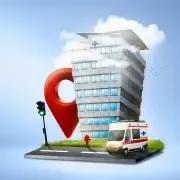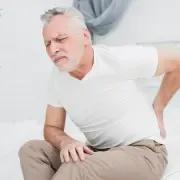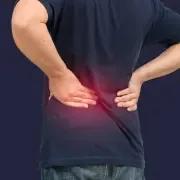Understanding Common Spine Injuries and How to Prevent Them
In This Article
Understanding Common Spine Injuries and How to Prevent Them
Parvathy
Updated on September 19, 2024
Medically verified by Dr. Arya
Fact checked by Dr. Fazeela

Orthopaedics
10 mints
Are you someone struggling with intense pain in your back and don't know how to cope up with it? Are you aware of the fact that it may be due to spine injuries.
So whether you’re trying to avoid back pain altogether or want to know how to protect yourself after a spine injury, you’re in the right place! Karetrip is here to guide you on how to tackle all those troubles.
In this blog, Karetrip will dive into the most common spine injuries, their causes, symptoms, and, most importantly, how to prevent them—so you can keep moving with confidence every day.
Types of Spine Injuries
Most common types of spine injuries that you should be aware of are as follows :
Herniated Disc (Slipped Disc)
This occurs when one of the discs between your vertebrae ruptures or bulges out, putting pressure on nearby nerves. A herniated disc can cause severe pain, numbness, and even weakness in the legs or arms, depending on where the injury occurs.
Symptoms:
- Sharp pain in the lower back, neck, or legs.
- Numbness or tingling in arms or legs.
- Weakness in muscles.
Causes:
- Sudden twisting or lifting heavy objects.
- Age-related wear and tear.
- Poor posture or sitting for long periods.
Sciatica
Sciatica is a condition where the sciatic nerve, which runs from the lower back down to your legs, becomes pinched or irritated. It often results from a herniated disc but can also be caused by other factors like spinal stenosis (narrowing of the spine).
Symptoms:
- Shooting pain that starts in the lower back and radiates down one leg.
- Burning or tingling sensations in the affected leg.
- Weakness or difficulty moving the leg.
Causes:
- Herniated discs.
- Bone spurs or narrowing of the spine.
- Traumatic injury to the back.
Spinal Stenosis
Spinal stenosis refers to the narrowing of spaces within your spine, which can press on the nerves. This condition is more common in older adults and can lead to chronic pain or difficulty walking.
Symptoms:
- Pain or cramping in the legs after prolonged standing or walking.
- Numbness or weakness in the legs.
- Difficulty balancing or walking.
Causes:
- Arthritis-related wear and tear.
- Bone spurs.
- Herniated discs.
Spondylolisthesis
This occurs when a vertebra slips out of place onto the bone below it. It can cause significant back pain and can sometimes compress the spinal cord or nerve roots.
Symptoms:
- Lower back pain.
- Stiffness or tightness in the hamstrings.
- Difficulty walking or standing for long periods.
Causes:
- Overuse from activities like weightlifting or gymnastics.
- Congenital spine defects.
- Degenerative changes in older adults.
Compression Fractures
Commonly seen in individuals with osteoporosis, compression fractures happen when a vertebra collapses due to weak bones. These fractures can lead to severe pain and even deformity in the spine.
Symptoms:
- Sudden, severe back pain.
- Loss of height.
- Spinal deformity or hunched posture.
Causes:
- Osteoporosis.
- Trauma or injury.
- Tumours affecting the spine.
 6 min read
6 min readTop Orthopaedic Hospitals In Bangalore For Bone And Joint Care
 10 min read
10 min readImpact of Untreated Back Problems
 10 min read
10 min readNon-Surgical Treatments for Back Pain
Get a Callback Now
What Puts You at Risk?
-
Lack of Exercise When your muscles are weak, they provide less support to the spine, increasing the risk of injury.
-
Poor Posture Slouching while sitting, standing, or even sleeping can strain your spine over time, leading to chronic issues.
-
Overexertion Whether it’s lifting heavy objects improperly or overdoing it at the gym, overexerting yourself can lead to injuries like herniated discs or muscle strains.
-
Age As you age, the bones and discs in your spine can wear down, making you more susceptible to injuries like spinal stenosis and compression fractures.
-
Obesity Excess body weight, especially around the abdomen, puts extra pressure on the spine, increasing the likelihood of developing conditions like herniated discs or sciatica.
Treatment and Recovery
Spine injuries can be debilitating, but with the right treatment, recovery is possible. Here’s how to manage spine injuries:
-
Rest and Avoid Overexertion The first step to healing is rest. Avoid activities that put strain on your spine, and give your body time to heal.
-
Physical Therapy Physical therapy is often recommended to strengthen the muscles around the injured area, improve flexibility, and promote healing.
-
Medications Over-the-counter pain relievers, anti-inflammatory drugs, and muscle relaxants can provide temporary relief.
-
Surgery In severe cases, surgery may be required to correct spine injuries like herniated discs or spinal stenosis. However, this is usually a last resort when other treatments fail.
-
Use Supportive Devices For injuries like compression fractures or spondylolisthesis, braces or other supportive devices can help stabilise the spine while it heals.
A healthier spine is essential for leading a healthier life.So always ensure that your spine is in good condition.
Conditions like herniated discs, sciatica, and spinal stenosis can often be avoided with proper care, posture, and strength training.
Whether sitting at a desk or lifting heavy objects, maintaining good posture is key to preventing spine injuries.
Strengthening your core muscles, including your back and abdomen, provides essential support to your spine, reducing the risk of injury.
Recognizing the signs of spine stress or injury early on and seeking treatment can prevent more severe conditions from developing.
While it’s impossible to eliminate the risk of spinal cord injuries entirely, understanding these common causes and following the prevention tips can significantly reduce the likelihood of such injuries.
Source Links
Comprehensive Spine Care
Medical News Today

